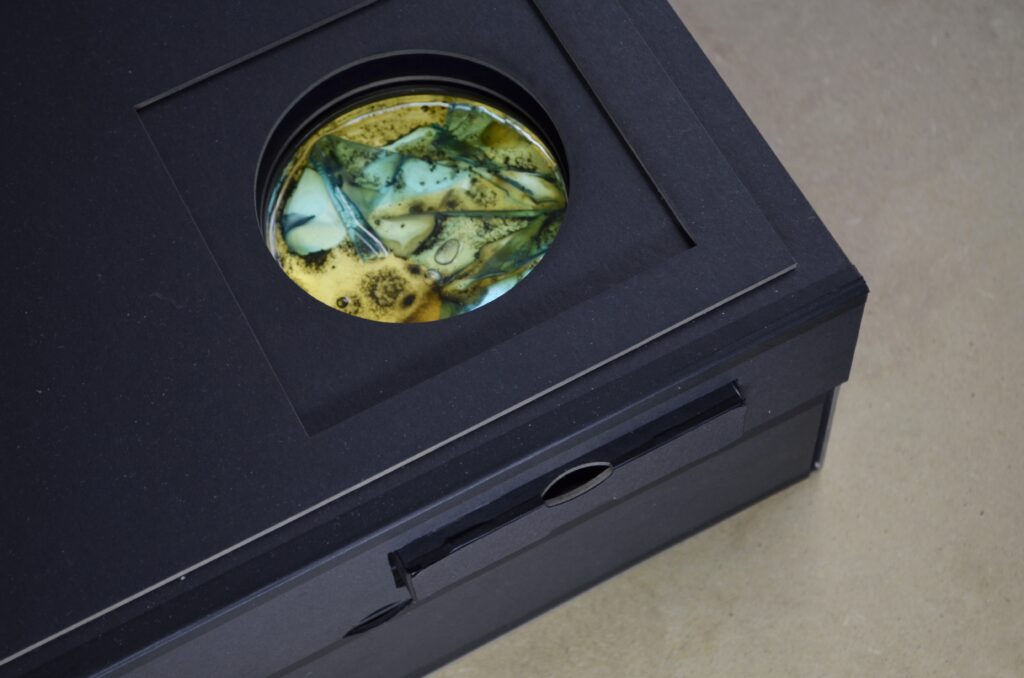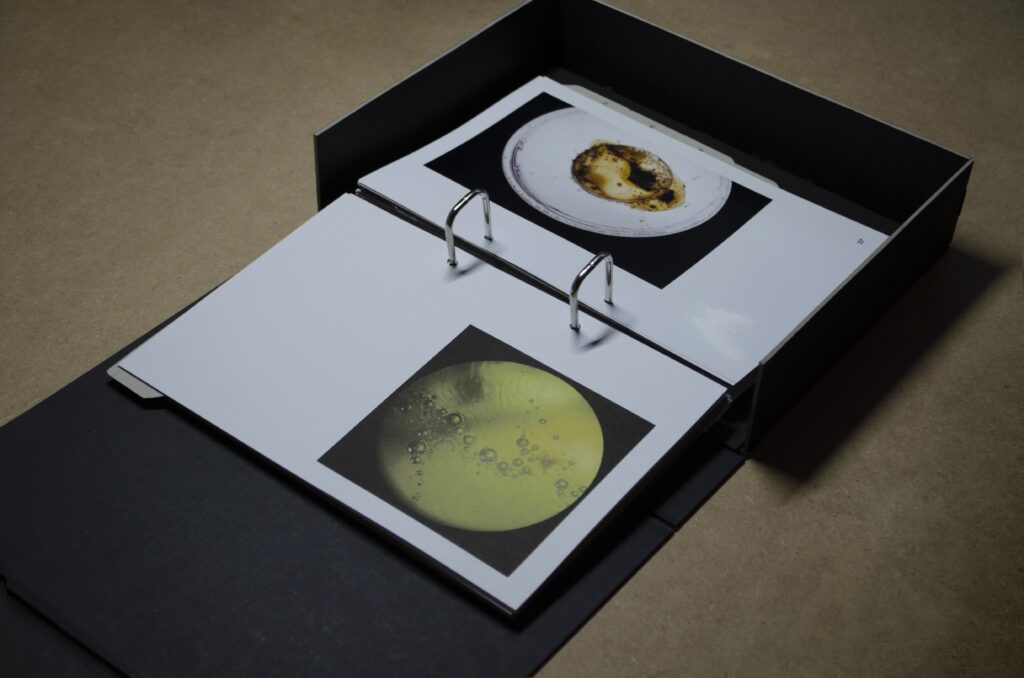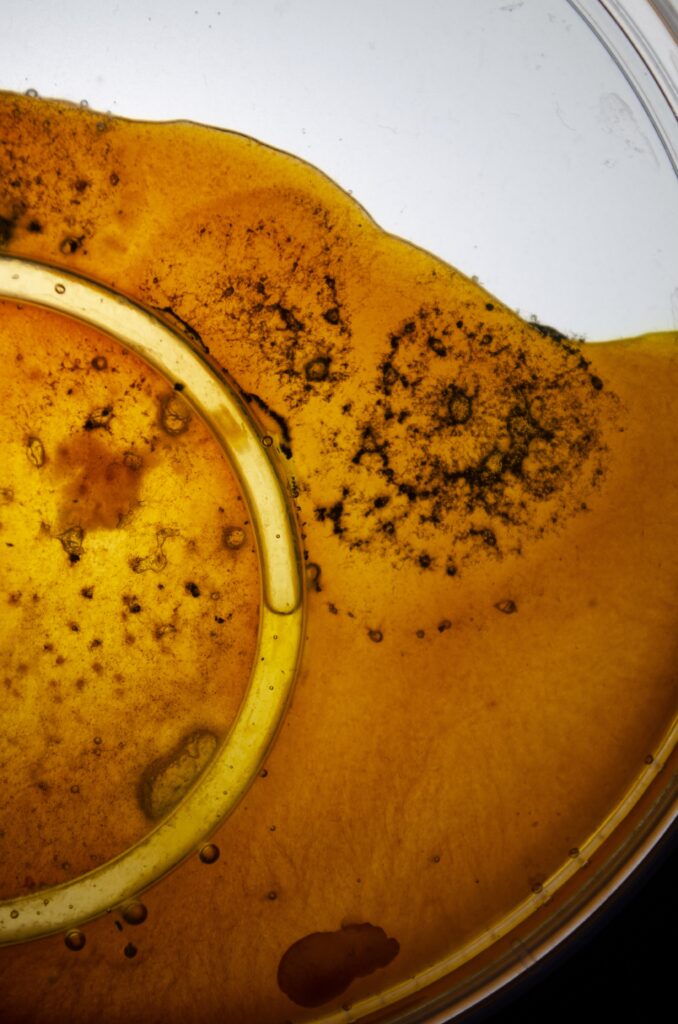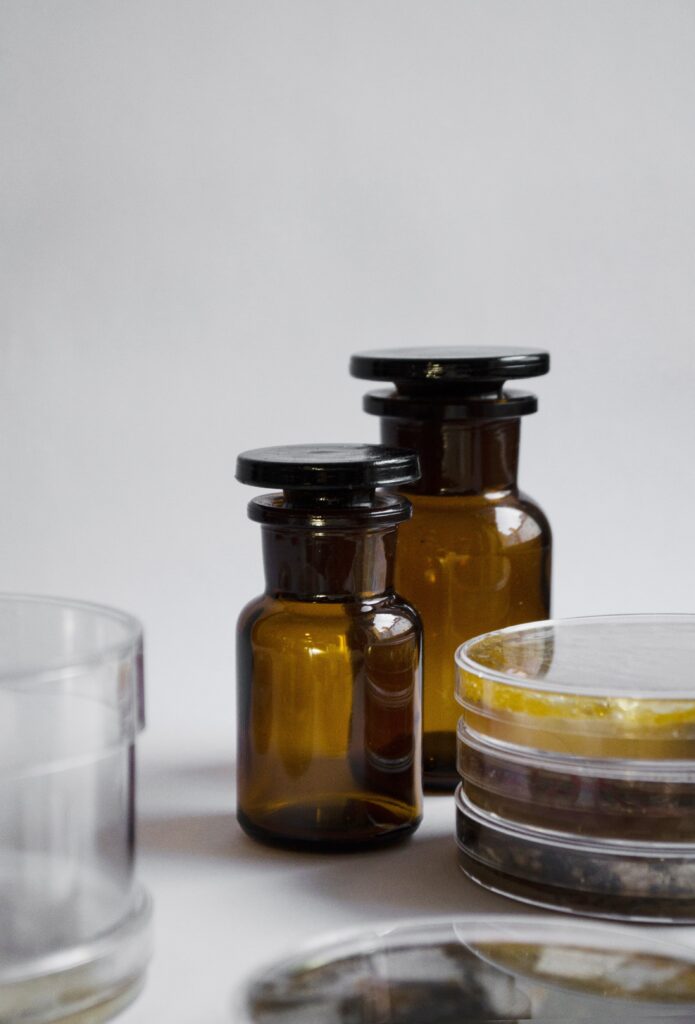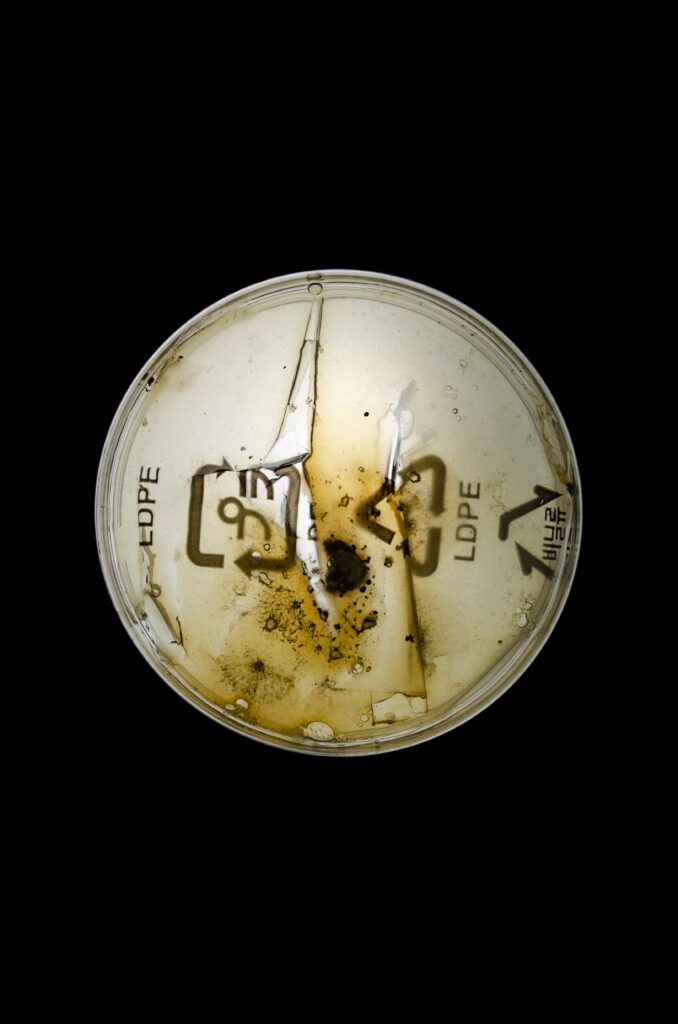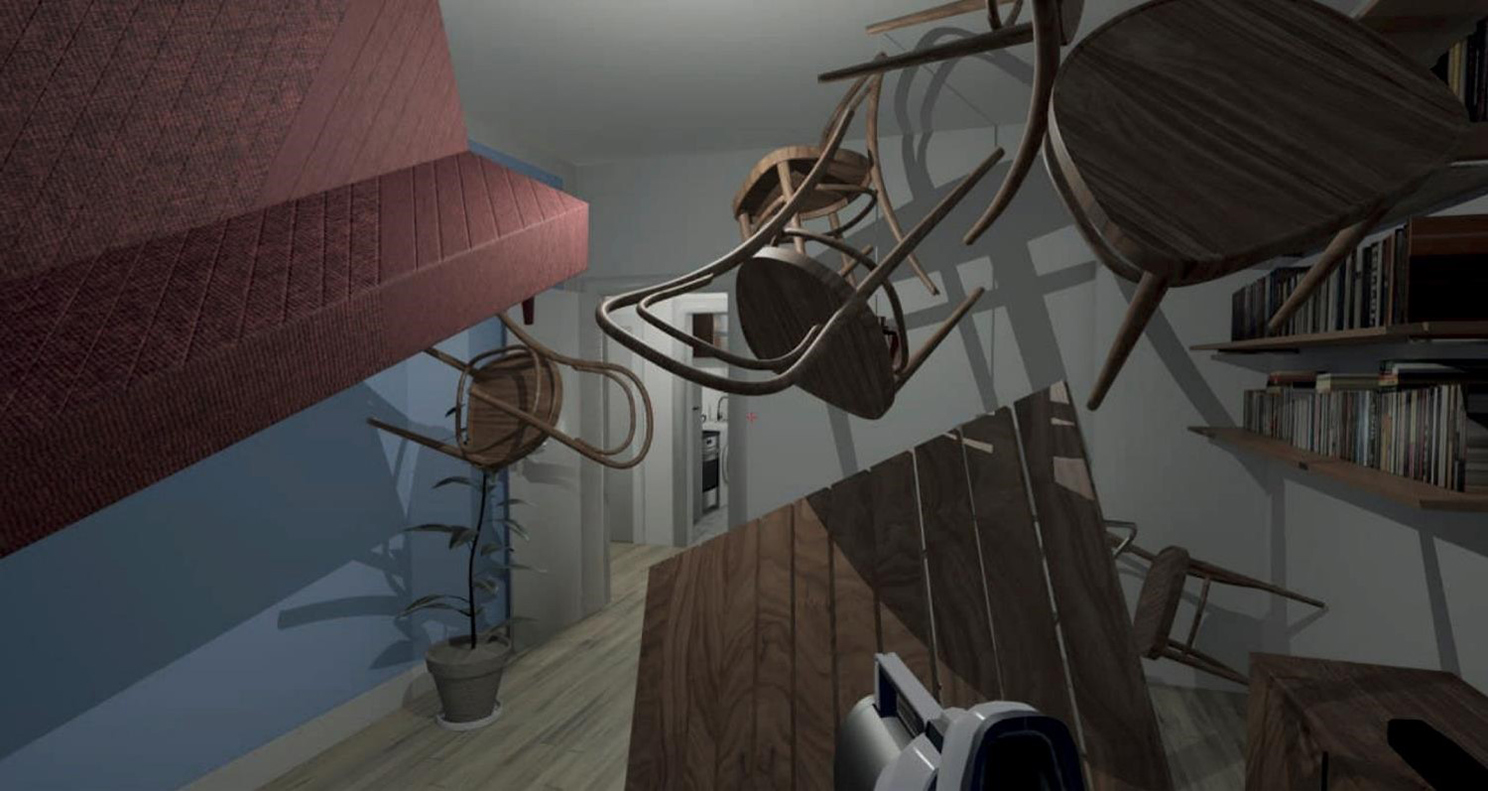Textil- und Flächendesign
Deutsch
English
LET THEM EAT PLASTIC, WS 20/21
SCENARIO
20.01.2121 EarthScience Journal Edition: Jan 2121
Article 27:
Breakthrough in Waste Disposal/Digesting the indigestible Microbes Now Able to Decompose Every Code
The past decade has finally shown progress in regards
to our waste crisis. As has been the centre of global attention, the disposal of plastic waste that accumulated between the 20th and 21st century remains a persistent concern. With environmental consequences continuing to spike, we are finally able to see the extent of the impact the former throw-away society has had on our planet over the past century. Previous methods to dispose of plastic waste such as landfilling, incineration, mechanical and chemical recycling or even biodegradable plastics did not make a large enough dent in the mountains of waste we are continuously fighting. Stricter laws prohibiting ocean pollution are resulting in uncontrollable amounts of landfill, occupying the scarce amount of space needed for housing. Parallel to this, incorrect disposal / littering over centuries leaking toxins into our natural world, has created worrying and visible transformations to regional ecosystems.
In search of microorganisms involved in the decomposition of natural life-cycles, scientists have indeed succeeded in finding a variety of ‘decomposers’ capable of degrading the synthetic materials previously produced. With great excitement I can now announce that finally a form of bacteria was found to decompose the plastic with the resin identification code number seven. This new finding completes the search for microbes across the board of plastics, as we now have at least one for every code. These new organisms, fantastical in their appearance, break down plastics across the spectrum in a matter of weeks as opposed to the hundreds of years needed when exposed to natural conditions.
Still, the excitement for this progress is to be treated with modesty, as we have a long way to go and not much time to do so. Many of them are not yet ‘usable’ in natural settings, as the microbes need to be presented in the correct environment. Growth and decomposition is most effective when conditions are sterile, avoiding bacterial competition due to external contamination. For this to happen on a larger scale, we would need to expand on laboratory conditions. Nevertheless, today marks a significant step towards repairing our ecosystem.
CONCEPT
20.01.2021
Let them eat plastic
“But where is ‘away’? Of course ‘away’ doesn’t really ex- ist. ‘Away’ has gone away.” — William Mcdonough, 2002
The accumulation of plastic waste over the past decades is becoming a vastly growing concern. Environmental consequences raise large questions around the impact of our current throw-away society, particularly those
to our natural systems. The problematic around how to correctly discard materials that are made to resist biodegradation is becoming increasingly complex, leaving no room for a single answer. Many contemporary design solutions focus on the production of materials that are able to decompose, others on the cycle of our single-use system by reusing materials that are already produced. But what about the materials that are not able to be reformatted? Or those that are not correctly discarded of?
“The only sensible way to think of plastic nowadays is to consider it as a raw material within the ecosystem of the earth. The apparent problem is that there is no species, process or actor that can feed on it: it is a next nature material, with its balancing counterpart yet to evolve. Perhaps some future-evolving microbe, able to digest plastic, could thrive on the vast amount of plastic ‘food’ available in the ecosystem. It might take a million years, however, for such a plastic eating microbe to evolve. Yet, it would certainly have enough food to proliferate.” — Koert van Mensvoort, Next Nature, 2011
Another possible solution involves a field concerning the science of decay. In search of microorganisms or other forms of life involved in the decomposition of natural lifecycles, scientists and designers around the world are searching for possible ‘decomposers’ to break down (and ideally neutralise) some of the toxic materials being produced. This raises concerns around the continuation of our current production system. What are the consequences of letting plastic eating microbes clean up our mess? And are they really capable of undoing the extent of our damage? What effect would this have to our carefully balanced ecological environment?
As a response to our ever-growing waste-problem, my project is a speculation on the progression of these scientific findings. Posing the question “What would it look like if bacteria could decompose plastic?”, this project aims to visualise a distant future in which many forms of bacteria are indeed able to break down plastic waste — creating new, fantastical organisms, structures and patterns. In reference to our anthropocentric climate/tendency, the title Let them eat plastic conveys a subtle criticism to- wards our one-sided/parasitic relationship to the natural world.
